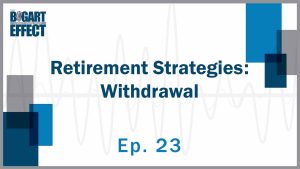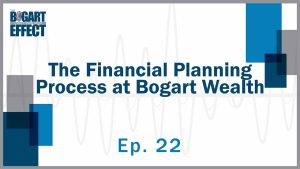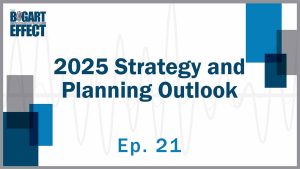Authored by – Patrick Marcinko
Introduction
The recent failure of Silicon Valley Bank has brought back into focus the importance of FDIC insurance. When fears grow that a bank may go out of business, many depositors will rush to withdrawal their money before the bank fails. This is commonly referred to as a bank run. The run on the bank can compound the solvency issues because the bank needs to raise more cash to be available for customer withdrawals. This can cause banks to quickly blow through their cash reserves and then default.
During the Great Depression, a lot of depositors began to panic that their banks would go out of business, and the money they had trusted the banks with would be gone. As the economy worsened, so did confidence in the US banking system. As confidence evaporated and bank runs multiplied, the government stepped in and created the Federal Deposit Insurance Corporation (FDIC). This new government agency was designed to insure depositors up to a maximum amount. The government believed the FDIC would give confidence that even in the event of a bank failure, their money would be insured by the full faith and credit of the U.S. government. The mission of the Federal Deposit Insurance Corporation (FDIC) is to maintain stability and public confidence in the nation’s financial system.[1] Since their establishment, the FDIC has been effective, with no depositor having lost a penny of insured funds after a bank defaulting.[2]
FDIC Coverage Amounts
When an insured bank fails, the FDIC promises to insure the balance of depositors’ accounts, up to a certain amount. The base coverage amount is $250,000 per depositor and per each insured bank. For example, if you had two individual checking accounts at different FDIC-insured banks, each account would be insured up to $250,000. The FDIC also separates coverage by ownership category. The table below details some of the common ownership categories. The FDIC provides a detailed overview of the definition of each ownership category, which can be found here.
| FDIC Deposit Insurance Coverage Limits[3] | |
| Type of Account | Coverage Amount |
| Single Accounts (Owned by One Person) | $250,000 per owner |
| Joint Accounts (Owned by Two or More Persons) | $250,000 per co-owner |
| Certain Retirement Accounts (Includes IRAs) | $250,000 per owner |
| Revocable Trust Accounts | $250,000 per owner per unique beneficiary |
| Irrevocable Trust Accounts | $250,000 for the noncontingent interest of each beneficiary |
Accounts Covered by FDIC
Whether or not your account is protected by the FDIC depends on whether the financial product is considered a deposit product and whether the bank is FDIC-insured. It is important to remember that the FDIC does not protect against investment losses. Not all accounts are considered a deposit product and the FDIC provides a list of accounts to help determine what is covered.[4]
FDIC Insured
- Checking accounts
- Negotiable Order of Withdrawal (NOW) accounts
- Savings accounts
- Money Market Deposit Accounts (MMDAs)
- Time deposits such as certificates of deposit (CDs)
- Cashier’s checks, money orders, and other official items issued by a bank
Not FDIC Insured
- Stock investments
- Bond investments
- Mutual funds
- Life insurance policies
- Annuities
- Municipal securities
- Safe deposit boxes or their contents
- U.S. Treasury bills, bonds or notes
- ANY investment that is not a deposit (even if the investments were purchased from an insured bank)
Money Market Funds are Considered Investments
While money market funds are considered a low-risk investment, the FDIC does not consider them a deposit product. Since money market funds are investment products and can suffer losses, they are not insured by the FDIC.
Applying for FDIC Insurance
When opening an account, you do not need to apply for FDIC insurance. If the account is a deposit product (not an investment) and opened at an FDIC-insured bank, the coverage will automatically be added. To find out if a bank is FDIC-insured, depositors are able to search using the FDIC’s BankFind Suite tool.
FDIC’s Electronic Deposit Insurance Estimator (EDIE)
A popular resource on their website is the FDIC’s Electronic Deposit Insurance Estimator (EDIE). This tool can be used to help estimate how much each account is covered by an FDIC-insured bank. The system can detail which accounts are covered and if any of the balances exceed insured limits or are uninsured. It’s important to remember that EDIE should only be used for deposits (not investments) and calculates coverage for one bank at a time. EDIE can be found here. An example of the reports that EDIE produces are shown below:
Sample EDIE Report – Accounts are Fully FDIC-Insured

Sample EDIE Report – Accounts are Partially Uninsured

Credit Unions & the National Credit Union Administration
Similar to banks, many credit unions are federally insured, but not by the Federal Deposit Insurance Corporation (FDIC). Instead, credit unions are insured by the National Credit Union Administration (NCUA). The standard insurance amount is $250,000 per share owner, per insured credit union, for each account ownership category.[5] The most covered ownership categories are single owner accounts, joint accounts, certain retirement accounts, revocable trust accounts, and irrevocable trust accounts. The coverage for credit unions under the NCUA is like the FDIC in that it is backed by the full faith and credit of the United States government.
Securities Investor Protection Corporation (SIPC)
While the FDIC covers banks and their customers deposits, the SIPC aims to protect individuals against the failure of their brokerage firm. When a brokerage firm fails, the SIPC steps in to protect customers when assets are missing from their accounts and make them whole up to a limit.
Protection Limits
The SIPC protects the securities and cash in your brokerage account up to $500,000. The $500,000 protection is limited per customer and can include up to $250,000 in cash within the account. It’s important to note that the coverage of cash is included and the $500,000 is total protection.
Brokerage clients are insured on a per customer and per brokerage firm basis. This means that there is no additional coverage for having multiple accounts, but the SIPC protects you up to $500,000 for each insured brokerage firm that you have assets with. But, the SIPC provides protection for customers with multiple accounts if they are a “separate capacity.” Accounts that are held within the same capacity are combined for protection limits.[6] The SIPC provides examples of separate capacities:
- Individual account
- Joint account
- An account for a corporation
- An account for a trust created under state law
- An individual retirement account
- A Roth individual retirement account
- An account held by an executor for an estate
- An account held by a guardian for a ward or minor
For example, if you had two individual accounts at the same brokerage firm, the SIPC protection would be combined and the total coverage $500,000. If you had an individual account and an IRA account, then each account would be protected up to $500,000, or $1,000,000 total.
Investment Losses are Not Protected
The SIPC only protects against the failure of a brokerage firm. They do not protect investors or make them whole from any investment losses. The SIPC provides the following guidance on investment losses[7]:
- SIPC does not protect against the decline in value of your securities.
- SIPC does not protect individuals who are sold worthless stocks and other securities.
- SIPC does not protect against losses due to a broker’s bad investment advice, or for recommending inappropriate investments.
Brokerage Firms with SIPC Protection
Many brokerage firms are required to be SIPC members and the majority of firms are protected. If you are curious if your brokerage is a SIPC member, they have a list of protected firms on their website.[8]
Conclusion
When opening accounts or reviewing existing accounts, it’s important to see if your cash accounts are FDIC or NCUA insured, and your brokerage accounts are protected by the SIPC. These protections are designed to aid in the event of a bank or brokerage failure. While rare, failures within the financial services industry do happen and it is good to check which accounts are insured and uninsured.
Sources:
[1] Federal Deposit Insurance Corporation – “What We Do, About FDIC”
[2] Federal Deposit Insurance Corporation – “Deposit Insurance, About FDIC”
[3] Federal Deposit Insurance Corporation – “Deposit Insurance at a Glance, FDIC Deposit Insurance”
[4] Federal Deposit Insurance Corporation – “Deposit Insurance at a Glance, When a Bank Fails”
[5] National Credit Union Administration – “Coverage Limits, How Your Accounts Are Federally Insured”
[6] Securities Investor Protection Corporation – “What SIPC Protects”
[7] Securities Investor Protection Corporation – “What SIPC Protects”
[8] Securities Investor Protection Corporation – “Introduction”
IMPORTANT DISCLOSURE INFORMATION
Please remember that past performance is no guarantee of future results. Different types of investments involve varying degrees of risk, and there can be no assurance that the future performance of any specific investment, investment strategy, or product (including the investments and/or investment strategies recommended or undertaken by Bogart Wealth, LLC [“Bogart Wealth”]), or any non-investment related content, made reference to directly or indirectly in this blog will be profitable, equal any corresponding indicated historical performance level(s), be suitable for your portfolio or individual situation, or prove successful. Due to various factors, including changing market conditions and/or applicable laws, the content may no longer be reflective of current opinions or positions. Moreover, you should not assume that any discussion or information contained in this blog serves as the receipt of, or as a substitute for, personalized investment advice from Bogart Wealth. To the extent that a reader has any questions regarding the applicability of any specific issue discussed above to his/her individual situation, he/she is encouraged to consult with the professional advisor of his/her choosing. Bogart Wealth is neither a law firm nor a certified public accounting firm and no portion of the blog content should be construed as legal or accounting advice. A copy of the Bogart Wealth’s current written disclosure Brochure discussing our advisory services and fees is available for review upon request or at www.bogartwealth.com. Please Note: Bogart Wealth does not make any representations or warranties as to the accuracy, timeliness, suitability, completeness, or relevance of any information prepared by any unaffiliated third party, whether linked to Bogart Wealth’s web site or blog or incorporated herein, and takes no responsibility for any such content. All such information is provided solely for convenience purposes only and all users thereof should be guided accordingly. Please Remember: If you are a Bogart Wealth client, please contact Bogart Wealth, in writing, if there are any changes in your personal/financial situation or investment objectives for the purpose of reviewing/evaluating/revising our previous recommendations and/or services, or if you would like to impose, add, or to modify any reasonable restrictions to our investment advisory services. Unless, and until, you notify us, in writing, to the contrary, we shall continue to provide services as we do currently. Please Also Remember to advise us if you have not been receiving account statements (at least quarterly) from the account custodian.





